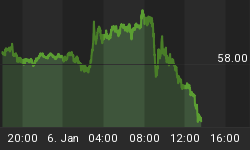If Richard Wyckoff was alive in the computer era what further tools would he offered us. In Wyckoff time charts were done by pen and paper, live prices came over a ticker wire and communications was delayed considerably. What could Wyckoff conjure up to further show off price and volume relationships if he had access to a computer?
If a stock price is to move from $50 to $100 you are almost guaranteed to see bars that have the close very near to the high of the bar, be wider in range than normal, and supported by good volume (ie not low, or extreme volume), this is a Wyckoff 'mark up' bar (or the more obvious term 'up bar'). This mark up bar is a demonstration of demand overcoming supply. Wyckoff defined many bar scenarios to determine the ebb and flow of demand and supply. Each represents different aspects of the battle between market players.
Reference, some are explained in more detail here: Glossary of Wyckoff Terms
Wyckoffian Bullish Bars:
- Mark up bar, up bar
- Automatic rally
- Selling Climax
- Jumping the creek
- Sign of strength
- Bullish Test
- Bullish Shakeout
- Spring
- No supply
Wyckoffian Bearish Bars:
- Mark down bar, down bar
- Buying Climax
- Breaking the ice
- Sign of weakness
- Bearish Test
- Bearish Shakeout
- Up Thrust
- No demand
In any stock price trend you will get any amount of permutations of the above, however in a bullish trend you will have the Wyckoff bullish bars out numbering the Wyckoff bearish bars, and vice versa for a bearish trend. To formulate an indicator that represents Wyckoffian logic we have to find common ground between the Wyckoffian bullish and bearish bars. The common ground we like are:
- Demand pressure will be recognised by bars having increased volume with closes that are high within the bars range.
- Supply pressure will be recognised by bars having increased volume with closes that are low within the bars range.
- If price change is supported by good volume then the indicator must move faster than when price change is not supported by volume.
We believe RTT TrendPower satisfies the above specifications. Follow the link to learn more.
In the chart below we apply the RTT TrendStatus and RTT TrendPower to the USD dollar bullish Etf UUP. NOTE: We do not look at these indicators in isolation. See previous posts on the euro and US Dollar below.
In this chart we note the important mark up periods with (A), (B) and (C). The first two precluded the UUP trend reversal in late 2009, the latter is showing the UUP maybe starting a trend reversal process once again. The US Dollar has suffered under a heavy bearish sentiment, and to turn this market up it requires a bullish statement equal to the task. To us, it looks like we are getting it, the next few weeks should confirm a change in trend for the US Dollar and this will be clearly confirmed by the RTT TrendPower indicator.

















